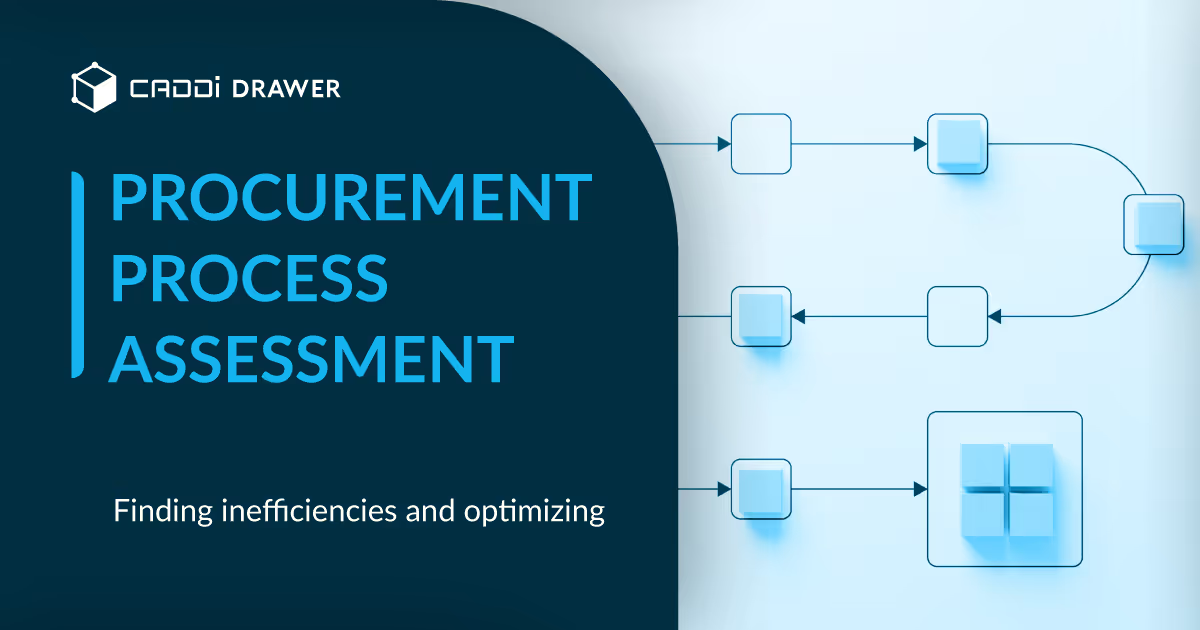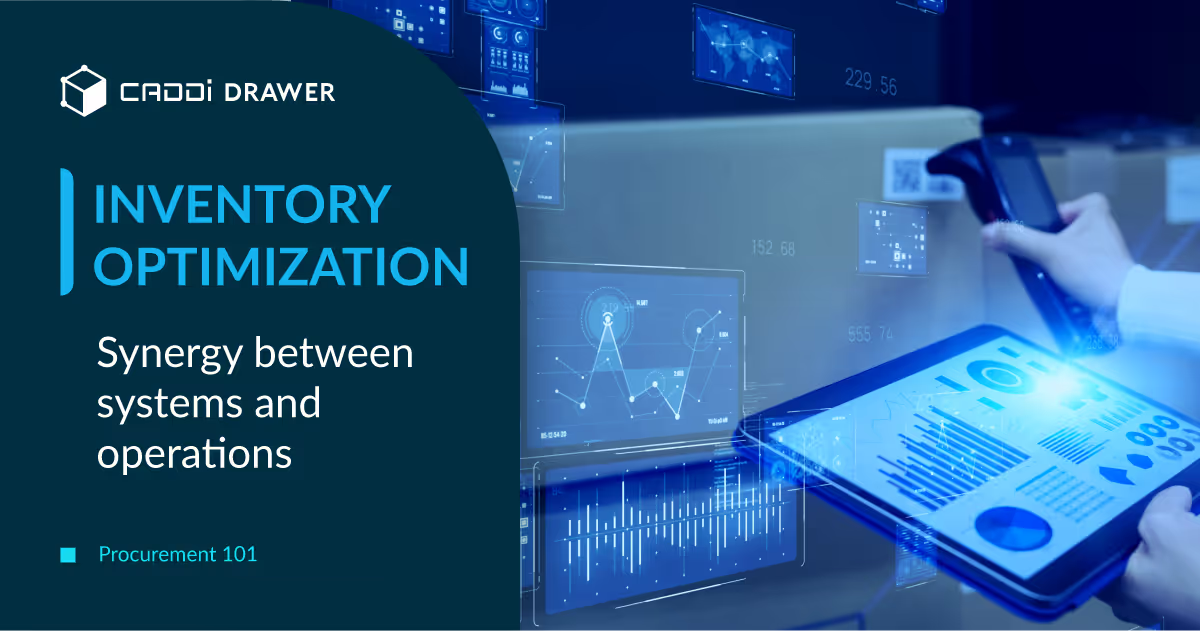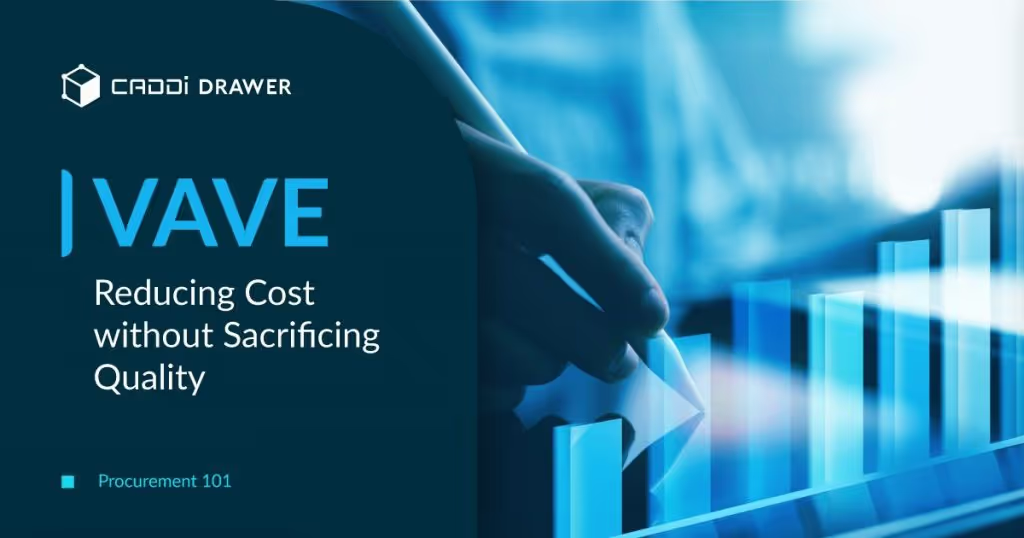Procurement 101: Lifecycle Costing (LCC) – How it works and why it’s important

Table of Contents

What is LCC?
Lifecycle costing (LCC) is an important method for assessing and quantifying the total cost of owning, operating, and maintaining an asset over its entire lifecycle. Unlike traditional cost accounting methods which focus only on the upfront acquisition cost, LCC provides a comprehensive evaluation of costs throughout an asset’s lifespan from inception to disposal.
The key benefits of utilizing LCC include:
- Identifying cost-effective solutions for long-term savings
- Justifying investments with higher upfront costs but lower lifetime costs
- Comparing competing project proposals based on total lifecycle costs
- Optimizing maintenance, operation, and disposal activities to minimize costs
- Ensuring accurate budgets and reserves for future costs
LCC works by identifying all relevant costs throughout the different lifecycle phases of an asset. This includes upfront costs like R&D, design, production, acquisition, construction, and commissioning. It also factors in ongoing operational and maintenance costs, potential upgrade or overhaul costs, and eventual demolition, disposal or decommissioning costs at end-of-life. LCC enables modeling different cost scenarios to find the most financially viable options.
Key Components of LCC
Lifecycle costing (LCC) is a methodology that tallies the total costs of a system or product over its lifetime. LCC includes analysis of all relevant costs incurred during the lifetime, including:
- Initial capital costs – The design, development, acquisition and commissioning costs. This may include expenses like research and development, procurement, construction, integration and installation.
- Operation costs – The maintenance, energy, fuel, staffing and other costs involved in operating the system or product over its useful life. This also accounts for foreseeable operating contingencies.
- Maintenance costs – The preventive and corrective maintenance required during the asset’s life, including routine servicing, inspections, repairs, and major overhauls or system updates.
- End-of-life costs – The decommissioning, disposal and any environmental remediation expenses at the end of the system or product’s lifespan. This may involve dismantling, demolition and recycling costs.
By using a LCC methodology and analyzing all relevant expenses, organizations can make more informed decisions when assessing potential projects, purchases and other long-term investments. LCC provides a comprehensive picture of the total costs and economic viability over the entire lifecycle.
Why Use LCC
Lifecycle costing provides a more accurate analysis of the total cost of a project or asset over its entire lifecycle. Rather than just looking at upfront costs, LCC incorporates all anticipated costs from acquisition to disposal including operating, maintenance, upgrade and disposal costs.
Using LCC analysis enables organizations to identify the most cost-effective option when evaluating competing projects or asset purchases. By considering the total lifecycle costs, rather than just initial price, LCC ensures you select the option that will provide the most value and lowest overall cost in the long run.
The comprehensive cost analysis of LCC also helps reveal opportunities for long-term savings. Organizations can pinpoint areas where investing more upfront may lower ongoing costs or extending asset life can delay replacement costs. Taking a long-term cost perspective facilitates better financial forecasting and more informed investment decisions.
How to Calculate LCC
Calculating LCC involves several steps:
- Define the time period for the analysis. This may be the expected lifetime of the asset or a specified number of years. The time period should be long enough to incorporate all relevant costs.
- Estimate costs over the defined period. This includes initial purchase/acquisition costs, operating and maintenance costs, repair and overhaul costs, and disposal costs. Consider costs at different life stages and intervals.
- Choose a discount rate. This accounts for the time value of money. A higher discount rate gives more weight to early cash flows. The discount rate depends on factors like inflation and interest rates.
- Calculate net present value (NPV). Use the discount rate to calculate the present value of each future cost. Sum the present values to get total LCC.
- Compare NPVs of different options to make an informed choice based on total cost, not just initial cost. The option with the lowest LCC may have a higher purchase price but lower operating costs over time.
Properly defining the time period, estimating all relevant costs at the right intervals, choosing an appropriate discount rate, and calculating NPV ensures an accurate LCC analysis. This method provides a complete picture of long-term costs to support smarter purchasing and maintenance decisions.
Real-World Example
Let’s look at a real-world example comparing the lifecycle costs of two HVAC systems for a commercial building:
HVAC System 1
- Initial purchase and installation cost: $120,000
- Annual maintenance cost: $5,000
- Replacement cost every 10 years: $60,000
- Lifespan: 30 years
Lifecycle cost calculation:
- Initial cost: $120,000
- Maintenance per year: $5,000
- Number of maintenance cycles (lifespan / maintenance frequency): 30/10 = 3
- Total maintenance cost (3 x $5,000): $15,000
- Number of replacements (lifespan / replacement frequency): 30/10 = 3
- Total replacement cost (3 x $60,000): $180,000
- Total LCC = $120,000 + $15,000 + $180,000 = $315,000
HVAC System 2
- Initial purchase and installation cost: $150,000
- Annual maintenance cost: $3,000
- Replacement cost every 15 years: $75,000
- Lifespan: 30 years
Lifecycle cost calculation:
- Initial cost: $150,000
- Maintenance per year: $3,000
- Number of maintenance cycles (lifespan / maintenance frequency): 30/15 = 2
- Total maintenance cost (2 x $3,000): $6,000
- Number of replacements (lifespan / replacement frequency): 30/15 = 2
- Total replacement cost (2 x $75,000): $150,000
- Total LCC = $150,000 + $6,000 + $150,000 = $306,000
In this example, HVAC System 1 has a lower total LCC of $315,000 compared to $306,000 for System 2, even though System 2 has a higher initial purchase cost. Performing a LCC analysis allows the comparison of total costs over the lifespan rather than just initial costs.
Limitations of LCC
There are some important limitations to be aware of when using LCC:
- Forecasting uncertainties – Since LCC involves projecting costs far into the future, there can be significant uncertainties and forecasting errors. Assumptions must be made about inflation rates, energy prices, equipment life, and other factors. Small errors in assumptions can sometimes lead to large errors in projected life cycle costs.
- Choosing discount rate – LCC calculations are highly sensitive to the discount rate chosen. Small changes in the discount rate can greatly impact the net present value results. There is often debate about the appropriate discount rate to use.
- Data availability – Good data is critical for accurate LCC analysis. However, data on operating costs, maintenance costs, equipment lives, and other factors is not always readily available. Estimating these costs can be challenging. Lack of robust data can undermine the analysis.
Difference between TCO and LCC
Total Cost of Ownership (TCO) and LCC are related concepts with key differences:
Scope:
- TCO: Total cost of owning and operating an asset.
- LCC: Total cost throughout an asset’s entire lifecycle.
Purpose:
- TCO: Determine true cost and compare alternatives.
- LCC: Evaluate economic feasibility and optimize design, operation, and maintenance.
Time horizon:
- TCO: Ownership period, may be shorter than the entire lifecycle.
- LCC: Entire lifecycle, from planning to disposal.
Decision-making:
- TCO: Short-term, choosing between suppliers or equipment.
- LCC: Long-term, investing in projects or optimizing asset design.
Cost elements:
- TCO: Direct and indirect costs of owning and operating.
- LCC: Wider range, including R&D, design, construction, operation, maintenance, and disposal.
Applications:
- TCO: Procurement, budgeting, cost control, outsourcing, IT investments.
- LCC: Long-term project planning, asset design optimization, maintenance and replacement strategies, environmental impact assessment, public sector investments.
In summary, TCO focuses on short-term costs of ownership, while LCC takes a comprehensive approach considering the total cost throughout an asset’s lifecycle. TCO is used for operational decisions, while LCC is used for strategic planning and asset management.
Best Practices
When performing an LCC analysis, it’s important to follow best practices:
- Clearly define assumptions – Be explicit about what assumptions are being made in the analysis, like expected useful life, maintenance costs, etc. Document all assumptions.
- Perform sensitivity analysis – Do sensitivity analysis to understand how results change based on different assumptions. Test different scenarios.
- Update with actual data – Use actual incurred costs and lifecycle data to update the LCC model periodically. This will make it more accurate over time.
- Use standard methodology – Follow a standard methodology like ISO 15686 or AACE to ensure consistency.
- Include all relevant costs – Costs like operations, maintenance, replacement, disposal, etc. should be included for whole lifecycle.
- Consider risks – Identify risks like changes in regulations, policies, business needs etc. and quantify their impact.
- Use software – Use dedicated LCC software tools to accurately model complex assets and scenarios.
- Get multiple estimates – Get estimates from multiple vendors when possible to better estimate costs.
- Document thoroughly – Document all details of the LCC analysis like methodology, assumptions, data sources, calculations, results etc.
Following best practices helps produce more realistic, meaningful, and actionable LCC analyses.
Conclusion
Lifecycle costing provides a comprehensive way to evaluate the total cost of owning an asset over its entire lifecycle. By understanding the full long-term costs, organizations can make smarter purchasing and maintenance decisions.
Some key points covered in this article:
- Lifecycle costing includes all costs incurred during acquisition, operation, maintenance and disposal of an asset. It provides a bigger picture than just upfront purchase price.
- Using LCC leads to better decision making by identifying cost-effective options. It helps justify investments that reduce long-term costs.
- Calculating LCC requires gathering extensive cost data and making predictions. There are established methodologies, standards and software tools available.
- Real-world examples show LCC delivers major cost savings compared to choosing options with lower upfront costs alone.
- Limitations include variability in cost estimates and lack of data. Proper application of LCC principles helps minimize these.
Lifecycle costing is gaining importance due to trends like sustainability, tightened budgets and asset management. Organizations adopting LCC find it brings financial benefits and better asset performance. While applying LCC has challenges, its usefulness will only increase moving forward. Using the concepts and tools covered here allows harnessing the full power of LCC.
What is LCC?
Lifecycle costing (LCC) is an important method for assessing and quantifying the total cost of owning, operating, and maintaining an asset over its entire lifecycle. Unlike traditional cost accounting methods which focus only on the upfront acquisition cost, LCC provides a comprehensive evaluation of costs throughout an asset’s lifespan from inception to disposal.
The key benefits of utilizing LCC include:
- Identifying cost-effective solutions for long-term savings
- Justifying investments with higher upfront costs but lower lifetime costs
- Comparing competing project proposals based on total lifecycle costs
- Optimizing maintenance, operation, and disposal activities to minimize costs
- Ensuring accurate budgets and reserves for future costs
LCC works by identifying all relevant costs throughout the different lifecycle phases of an asset. This includes upfront costs like R&D, design, production, acquisition, construction, and commissioning. It also factors in ongoing operational and maintenance costs, potential upgrade or overhaul costs, and eventual demolition, disposal or decommissioning costs at end-of-life. LCC enables modeling different cost scenarios to find the most financially viable options.
Key Components of LCC
Lifecycle costing (LCC) is a methodology that tallies the total costs of a system or product over its lifetime. LCC includes analysis of all relevant costs incurred during the lifetime, including:
- Initial capital costs – The design, development, acquisition and commissioning costs. This may include expenses like research and development, procurement, construction, integration and installation.
- Operation costs – The maintenance, energy, fuel, staffing and other costs involved in operating the system or product over its useful life. This also accounts for foreseeable operating contingencies.
- Maintenance costs – The preventive and corrective maintenance required during the asset’s life, including routine servicing, inspections, repairs, and major overhauls or system updates.
- End-of-life costs – The decommissioning, disposal and any environmental remediation expenses at the end of the system or product’s lifespan. This may involve dismantling, demolition and recycling costs.
By using a LCC methodology and analyzing all relevant expenses, organizations can make more informed decisions when assessing potential projects, purchases and other long-term investments. LCC provides a comprehensive picture of the total costs and economic viability over the entire lifecycle.
Why Use LCC
Lifecycle costing provides a more accurate analysis of the total cost of a project or asset over its entire lifecycle. Rather than just looking at upfront costs, LCC incorporates all anticipated costs from acquisition to disposal including operating, maintenance, upgrade and disposal costs.
Using LCC analysis enables organizations to identify the most cost-effective option when evaluating competing projects or asset purchases. By considering the total lifecycle costs, rather than just initial price, LCC ensures you select the option that will provide the most value and lowest overall cost in the long run.
The comprehensive cost analysis of LCC also helps reveal opportunities for long-term savings. Organizations can pinpoint areas where investing more upfront may lower ongoing costs or extending asset life can delay replacement costs. Taking a long-term cost perspective facilitates better financial forecasting and more informed investment decisions.
How to Calculate LCC
Calculating LCC involves several steps:
- Define the time period for the analysis. This may be the expected lifetime of the asset or a specified number of years. The time period should be long enough to incorporate all relevant costs.
- Estimate costs over the defined period. This includes initial purchase/acquisition costs, operating and maintenance costs, repair and overhaul costs, and disposal costs. Consider costs at different life stages and intervals.
- Choose a discount rate. This accounts for the time value of money. A higher discount rate gives more weight to early cash flows. The discount rate depends on factors like inflation and interest rates.
- Calculate net present value (NPV). Use the discount rate to calculate the present value of each future cost. Sum the present values to get total LCC.
- Compare NPVs of different options to make an informed choice based on total cost, not just initial cost. The option with the lowest LCC may have a higher purchase price but lower operating costs over time.
Properly defining the time period, estimating all relevant costs at the right intervals, choosing an appropriate discount rate, and calculating NPV ensures an accurate LCC analysis. This method provides a complete picture of long-term costs to support smarter purchasing and maintenance decisions.
Real-World Example
Let’s look at a real-world example comparing the lifecycle costs of two HVAC systems for a commercial building:
HVAC System 1
- Initial purchase and installation cost: $120,000
- Annual maintenance cost: $5,000
- Replacement cost every 10 years: $60,000
- Lifespan: 30 years
Lifecycle cost calculation:
- Initial cost: $120,000
- Maintenance per year: $5,000
- Number of maintenance cycles (lifespan / maintenance frequency): 30/10 = 3
- Total maintenance cost (3 x $5,000): $15,000
- Number of replacements (lifespan / replacement frequency): 30/10 = 3
- Total replacement cost (3 x $60,000): $180,000
- Total LCC = $120,000 + $15,000 + $180,000 = $315,000
HVAC System 2
- Initial purchase and installation cost: $150,000
- Annual maintenance cost: $3,000
- Replacement cost every 15 years: $75,000
- Lifespan: 30 years
Lifecycle cost calculation:
- Initial cost: $150,000
- Maintenance per year: $3,000
- Number of maintenance cycles (lifespan / maintenance frequency): 30/15 = 2
- Total maintenance cost (2 x $3,000): $6,000
- Number of replacements (lifespan / replacement frequency): 30/15 = 2
- Total replacement cost (2 x $75,000): $150,000
- Total LCC = $150,000 + $6,000 + $150,000 = $306,000
In this example, HVAC System 1 has a lower total LCC of $315,000 compared to $306,000 for System 2, even though System 2 has a higher initial purchase cost. Performing a LCC analysis allows the comparison of total costs over the lifespan rather than just initial costs.
Limitations of LCC
There are some important limitations to be aware of when using LCC:
- Forecasting uncertainties – Since LCC involves projecting costs far into the future, there can be significant uncertainties and forecasting errors. Assumptions must be made about inflation rates, energy prices, equipment life, and other factors. Small errors in assumptions can sometimes lead to large errors in projected life cycle costs.
- Choosing discount rate – LCC calculations are highly sensitive to the discount rate chosen. Small changes in the discount rate can greatly impact the net present value results. There is often debate about the appropriate discount rate to use.
- Data availability – Good data is critical for accurate LCC analysis. However, data on operating costs, maintenance costs, equipment lives, and other factors is not always readily available. Estimating these costs can be challenging. Lack of robust data can undermine the analysis.
Difference between TCO and LCC
Total Cost of Ownership (TCO) and LCC are related concepts with key differences:
Scope:
- TCO: Total cost of owning and operating an asset.
- LCC: Total cost throughout an asset’s entire lifecycle.
Purpose:
- TCO: Determine true cost and compare alternatives.
- LCC: Evaluate economic feasibility and optimize design, operation, and maintenance.
Time horizon:
- TCO: Ownership period, may be shorter than the entire lifecycle.
- LCC: Entire lifecycle, from planning to disposal.
Decision-making:
- TCO: Short-term, choosing between suppliers or equipment.
- LCC: Long-term, investing in projects or optimizing asset design.
Cost elements:
- TCO: Direct and indirect costs of owning and operating.
- LCC: Wider range, including R&D, design, construction, operation, maintenance, and disposal.
Applications:
- TCO: Procurement, budgeting, cost control, outsourcing, IT investments.
- LCC: Long-term project planning, asset design optimization, maintenance and replacement strategies, environmental impact assessment, public sector investments.
In summary, TCO focuses on short-term costs of ownership, while LCC takes a comprehensive approach considering the total cost throughout an asset’s lifecycle. TCO is used for operational decisions, while LCC is used for strategic planning and asset management.
Best Practices
When performing an LCC analysis, it’s important to follow best practices:
- Clearly define assumptions – Be explicit about what assumptions are being made in the analysis, like expected useful life, maintenance costs, etc. Document all assumptions.
- Perform sensitivity analysis – Do sensitivity analysis to understand how results change based on different assumptions. Test different scenarios.
- Update with actual data – Use actual incurred costs and lifecycle data to update the LCC model periodically. This will make it more accurate over time.
- Use standard methodology – Follow a standard methodology like ISO 15686 or AACE to ensure consistency.
- Include all relevant costs – Costs like operations, maintenance, replacement, disposal, etc. should be included for whole lifecycle.
- Consider risks – Identify risks like changes in regulations, policies, business needs etc. and quantify their impact.
- Use software – Use dedicated LCC software tools to accurately model complex assets and scenarios.
- Get multiple estimates – Get estimates from multiple vendors when possible to better estimate costs.
- Document thoroughly – Document all details of the LCC analysis like methodology, assumptions, data sources, calculations, results etc.
Following best practices helps produce more realistic, meaningful, and actionable LCC analyses.
Conclusion
Lifecycle costing provides a comprehensive way to evaluate the total cost of owning an asset over its entire lifecycle. By understanding the full long-term costs, organizations can make smarter purchasing and maintenance decisions.
Some key points covered in this article:
- Lifecycle costing includes all costs incurred during acquisition, operation, maintenance and disposal of an asset. It provides a bigger picture than just upfront purchase price.
- Using LCC leads to better decision making by identifying cost-effective options. It helps justify investments that reduce long-term costs.
- Calculating LCC requires gathering extensive cost data and making predictions. There are established methodologies, standards and software tools available.
- Real-world examples show LCC delivers major cost savings compared to choosing options with lower upfront costs alone.
- Limitations include variability in cost estimates and lack of data. Proper application of LCC principles helps minimize these.
Lifecycle costing is gaining importance due to trends like sustainability, tightened budgets and asset management. Organizations adopting LCC find it brings financial benefits and better asset performance. While applying LCC has challenges, its usefulness will only increase moving forward. Using the concepts and tools covered here allows harnessing the full power of LCC.
Ready to see CADDi Drawer in action? Get a personalized demo.
Subscribe to our Blog!
Related Resources












.svg)



.svg)
.svg)
.svg)


